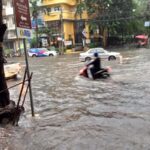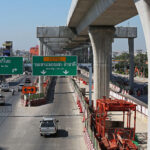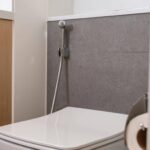Most Thai provinces have recorded dangerous levels of PM2.5 in the air, with Bangkok and the country’s center the worst hit. Authorities are urging caution.
Thailand is facing another wave of air pollution. Smog has enveloped much of the country. According to the Geo-Information and Space Technology Development Agency (Gistda), on the morning of Tuesday, January 21, 2025, health-threatening levels of PM2.5 ultrafine particles were recorded in 70 of the kingdom’s 77 provinces. The situation was most severe in Greater Bangkok and the country’s central regions.
Gistda reports that concentrations of PM2.5 (tiny particles with a diameter of 2.5 micrometers or less) have reached the “red” level, signaling a health hazard in 27 provinces. Over the past 24 hours, the highest pollution level (144.8 µg/m3) was recorded in Samutsakhon province, west of Bangkok.

In Bangkok itself, the concentration of PM2.5 was 125.1 µg/m3, exceeding the safe limit set by the government (37.5 µg/m3) by more than three times. High pollution levels were also observed in other provinces surrounding the capital: 119.3 µg/m³ in Nakhonpathom, 116.3 µg/m³ in Nonthaburi, and 115.3 µg/m³ in Sam.
The tense situation persists in other regions as well. PM2.5 levels reached 109.4 µg/m³ in Samutsongram, 108.4 µg/m³ in Pathumthani, 107.7 µg/m³ in Singburi, 106.4 µg/m³ in Ratchaburi, 104.8 µg/m³ in Ayutthaya, 103 µg/m³ in Sukhothai and 101.2 µg/m³ in Angthong. In fifteen provinces, including Lopburi, Chonburi, Phetchaburi, Saraburi, Suphanburi, Rayong, Chainat, Chachengsao, Kanchanaburi, Sakeo, Uthaithani, Nakhon Sawan, Phitsanulok, Phetchabun, and Prachuapkhirikkhan, PM2.5 concentrations ranged from 75.4 to 95 µg/m³, remaining in the red zone.
While most of Thailand suffers from air pollution, seven provinces remain relatively benign. Three of them – Pangnga (32.2 µg/m³), Surat Thani (32.1 µg/m³), and Chumphon (29.7 µg/m³) – have moderate air quality. Another four provinces – Krabi (24.9 µg/m³), Chiang Rai (24.6 µg/m³), Chiang Mai (21.4 µg/m³), and Mae Hong Son (12.4 µg/m³) – boast good air quality.
The remaining 43 provinces recorded “orange” pollution levels, signifying the beginning of adverse health impacts. PM2.5 concentrations in these regions range from 37.7 to 75 µg/m³.
Repeated episodes of air pollution in Thailand have raised serious public health concerns. The authorities are urging residents, especially those with respiratory diseases, to take precautions and limit outdoor activities if possible. The government is looking for ways to address the problem, which is becoming increasingly acute. The recommendations for Russian tourists do not differ from the general ones; you should follow the information updates and recommendations of local authorities.
Read More Articles Here
Read More Articles Here










